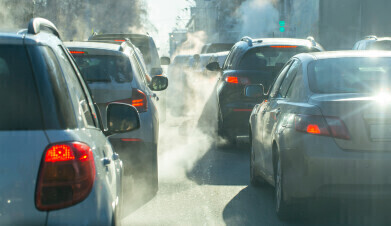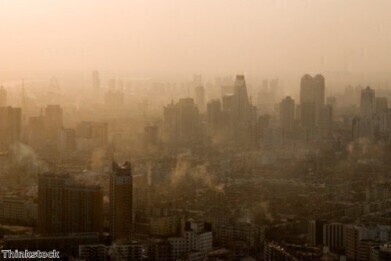Ambient air quality
Delhi wrestles with surge in airborne particulates from vehicle emissions
Oct 13 2023
Delhi, a sprawling metropolis witnessing rapid urban development, is no stranger to pollution crises. Recent studies have brought to light a particularly alarming concern: the prevalence of nanoparticles in the city's air, largely emanating from vehicular emissions. These microscopic pollutants pose significant health and environmental challenges that require immediate attention.
Research conducted by the Delhi Technological University (DTU) has shown a dramatic variation in nanoparticle concentrations in the city's air during two distinct periods in 2021. The period from April to June (Period I) saw about a 31% decrease in particle concentration, attributed to the reduced human activity during the COVID-19 lockdown. Conversely, the months of October and November (Period II) marked a 35% surge in particle density, coinciding with the Diwali festivities and the associated increase in firework emissions.
What makes nanoparticles especially concerning is their minuscule size, typically between 10 to 1,090 nanometres in diameter. To put it in perspective, these particles are approximately 600 times smaller than a strand of human hair, rendering them invisible to the naked eye. This tiny size allows them to penetrate deep into our respiratory system and, from there, transport to various parts of the body. The consequences of this can be severe, including inflammation of the lungs, neurological issues, and other acute and chronic health conditions.
A noteworthy aspect of the DTU study is its focus on the urban road environments, particularly the Bawana road in Northwest Delhi. Connecting Delhi to Rohtak in Haryana, this busy road, bordered by educational, residential, and commercial zones, sees an average of 40,000 vehicles daily. The primary pollution culprit here is vehicular emissions, although other contributors, such as biomass burning and residential heating, play their own roles.
Assistant Professor at DTU's Department of Environmental Engineering, Dr. Rajeev Kumar Mishra and his team found a direct correlation between vehicular exhausts and the concentration of nanoparticles. During high wind speeds, these particles disperse over a broader area, escalating the exposure risk for residents in the vicinity. Highlighting the gravity of the issue, they explained that ultra-fine particles could account for up to 90% of the total nanoparticle concentrations in urban settings. This revelation is particularly concerning for densely populated areas and major thoroughfares in Delhi. Individuals with professions that keep them on or near roads – from traffic police and street vendors to delivery personnel – are particularly vulnerable.
Environmental factors, such as relative humidity and wind speed, also play a pivotal role in the concentration and dispersion of these particles. For instance, an increase in humidity can lead to a higher concentration of these pollutants. Similarly, peak traffic hours in the morning and evening result in higher emissions, while increased wind speeds can spread these particles more extensively.
The pressing issue of nanoparticles in Delhi's air underscores the broader environmental and health challenges posed by rapid urbanization. Comprehensive strategies, encompassing policy formulation, health impact assessments, and sustainability initiatives, are imperative to tackle this looming crisis. As Delhi stands at the crossroads of development and environmental preservation, timely actions today will determine the health and well-being of its residents tomorrow.
Digital Edition
IET 35.2 March
April 2025
Air Monitoring - Probe Sampling in Hazardous Areas Under Extreme Conditions - New, Game-Changing Sensor for Methane Emissions - Blue Sky Thinking: a 50-year Retrospective on Technological Prog...
View all digital editions
Events
May 10 2025 Karachi, Pakistan
May 11 2025 Vienna, Austria
May 11 2025 Seoul, South Korea
Salon Analyse Industrielle & Instrumentation
May 14 2025 Paris, France
May 15 2025 Istanbul, Turkey


















_(4427399123)-(2).jpg)





